Shopping Cart
Remove All Your shopping cart is currently empty
Your shopping cart is currently empty
Anti-Amphiregulin Polyclonal Antibody is a Rabbit antibody targeting Amphiregulin. Anti-Amphiregulin Polyclonal Antibody can be used in IF,IHC-Fr,IHC-P,WB.
| Pack Size | Price | USA Warehouse | Global Warehouse | Quantity |
|---|---|---|---|---|
| 50 μL | $220 | 7-10 days | 7-10 days | |
| 100 μL | $374 | 7-10 days | 7-10 days | |
| 200 μL | $529 | 7-10 days | 7-10 days |
| Description | Anti-Amphiregulin Polyclonal Antibody is a Rabbit antibody targeting Amphiregulin. Anti-Amphiregulin Polyclonal Antibody can be used in IF,IHC-Fr,IHC-P,WB. |
| Synonyms | SDGF, MGC13647, CRDGF, AREGB, AREG, AR, Amphiregulin |
| Ig Type | IgG |
| Reactivity | Human,Mouse,Rat (predicted:Dog,Cow,Horse,Rabbit,Sheep) |
| Verified Activity | 1. Paraformaldehyde-fixed, paraffin embedded (human tonsil); Antigen retrieval by boiling in sodium citrate buffer (pH6.0) for 15 min; Block endogenous peroxidase by 3% hydrogen peroxide for 20 min; Blocking buffer (normal goat serum) at 37°C for 30 min; Antibody incubation with (Amphiregulin) Polyclonal Antibody, Unconjugated (TMAB-00111) at 1:200 overnight at 4°C, followed by operating according to SP Kit (Rabbit) instructions and DAB staining. 2. Paraformaldehyde-fixed, paraffin embedded (human gastric carcinoma); Antigen retrieval by boiling in sodium citrate buffer (pH6.0) for 15 min; Block endogenous peroxidase by 3% hydrogen peroxide for 20 min; Blocking buffer (normal goat serum) at 37°C for 30 min; Antibody incubation with (Amphiregulin) Polyclonal Antibody, Unconjugated (TMAB-00111) at 1:200 overnight at 4°C, followed by operating according to SP Kit (Rabbit) instructions and DAB staining. 3. Paraformaldehyde-fixed, paraffin embedded (human liver carcinoma); Antigen retrieval by boiling in sodium citrate buffer (pH6.0) for 15 min; Block endogenous peroxidase by 3% hydrogen peroxide for 20 min; Blocking buffer (normal goat serum) at 37°C for 30 min; Antibody incubation with (Amphiregulin) Polyclonal Antibody, Unconjugated (TMAB-00111) at 1:200 overnight at 4°C, followed by operating according to SP Kit (Rabbit) instructions and DAB staining. 4. Sample: HepG2 (Human) Cell Lysate at 30 μg Primary: Anti-Amphiregulin (TMAB-00111) at 1/2000 dilution Secondary: IRDye800CW Goat Anti-Rabbit IgG at 1/20000 dilution Predicted band size: 26 kDa Observed band size: 41 kDa 5. Sample: A549 (Human) Cell Lysate at 30 μg Primary: Anti-Amphiregulin (TMAB-00111) at 1/500 dilution Secondary: IRDye800CW Goat Anti-Rabbit IgG at 1/20000 dilution Predicted band size: 26 kDa Observed band size: 41 kDa 6. Paraformaldehyde-fixed, paraffin embedded (Rat brain); Antigen retrieval by boiling in sodium citrate buffer (pH6.0) for 15 min; Block endogenous peroxidase by 3% hydrogen peroxide for 20 min; Blocking buffer (normal goat serum) at 37°C for 30 min; Antibody incubation with (Amphiregulin) Polyclonal Antibody, Unconjugated (TMAB-00111) at 1:400 overnight at 4°C, followed by operating according to SP Kit (Rabbit) instructions and DAB staining. 7. Tissue/cell: mouse fetal intestine;4% Paraformaldehyde-fixed and paraffin-embedded; Antigen retrieval: citrate buffer (0.01M, pH6.0), Boiling bathing for 15 min; Blocking buffer (normal goat serum) at 37°C for 20 min; Incubation: Anti-Amphiregulin Polyclonal Antibody, Unconjugated (TMAB-00111) 1:200, overnight at 4°C; The secondary antibody was Goat Anti-Rabbit IgG, Cy3 conjugated used at 1:200 dilution for 40 minutes at 37°C. DAPI (5 μg/ml,blue) was used to stain the cell nucleus. 8. Tissue/cell: mouse fetal liver;4% Paraformaldehyde-fixed and paraffin-embedded; Antigen retrieval: citrate buffer (0.01M, pH6.0), Boiling bathing for 15 min; Blocking buffer (normal goat serum) at 37°C for 20 min; Incubation: Anti-Amphiregulin Polyclonal Antibody, Unconjugated (TMAB-00111) 1:200, overnight at 4°C; The secondary antibody was Goat Anti-Rabbit IgG, Cy3 conjugated used at 1:200 dilution for 40 minutes at 37°C. DAPI (5 μg/ml,blue) was used to stain the cell nucleus. 9. Tissue/cell: mouse embryo tissue;4% Paraformaldehyde-fixed and paraffin-embedded; Antigen retrieval: citrate buffer (0.01M, pH6.0), Boiling bathing for 15 min; Blocking buffer (normal goat serum) at 37°C for 20 min; Incubation: Anti-Amphiregulin Polyclonal Antibody, Unconjugated (TMAB-00111) 1:200, overnight at 4°C; The secondary antibody was Goat Anti-Rabbit IgG, Cy3 conjugated used at 1:200 dilution for 40 minutes at 37°C. DAPI (5 μg/ml,blue) was used to stain the cell nucleus. 10. Sample: Lane 1: Mouse Placenta tissue lysates Lane 2: Mouse Breast tissue lysates Lane 3: Mouse Testis tissue lysates Lane 4: Rat Placenta tissue lysates Lane 5: Rat Breast tissue lysates Lane 6: Rat Testis tissue lysates Lane 7: Human MCF-7 cell lysates Lane 8: Human HepG2 cell lysates Lane 9: Human A431 cell lysates Primary: Anti-Amphiregulin (TMAB-00111) at 1/1000 dilution Secondary: IRDye800CW Goat Anti-Rabbit IgG at 1/20000 dilution Predicted band size: 16 kDa Observed band size: 47 kDa 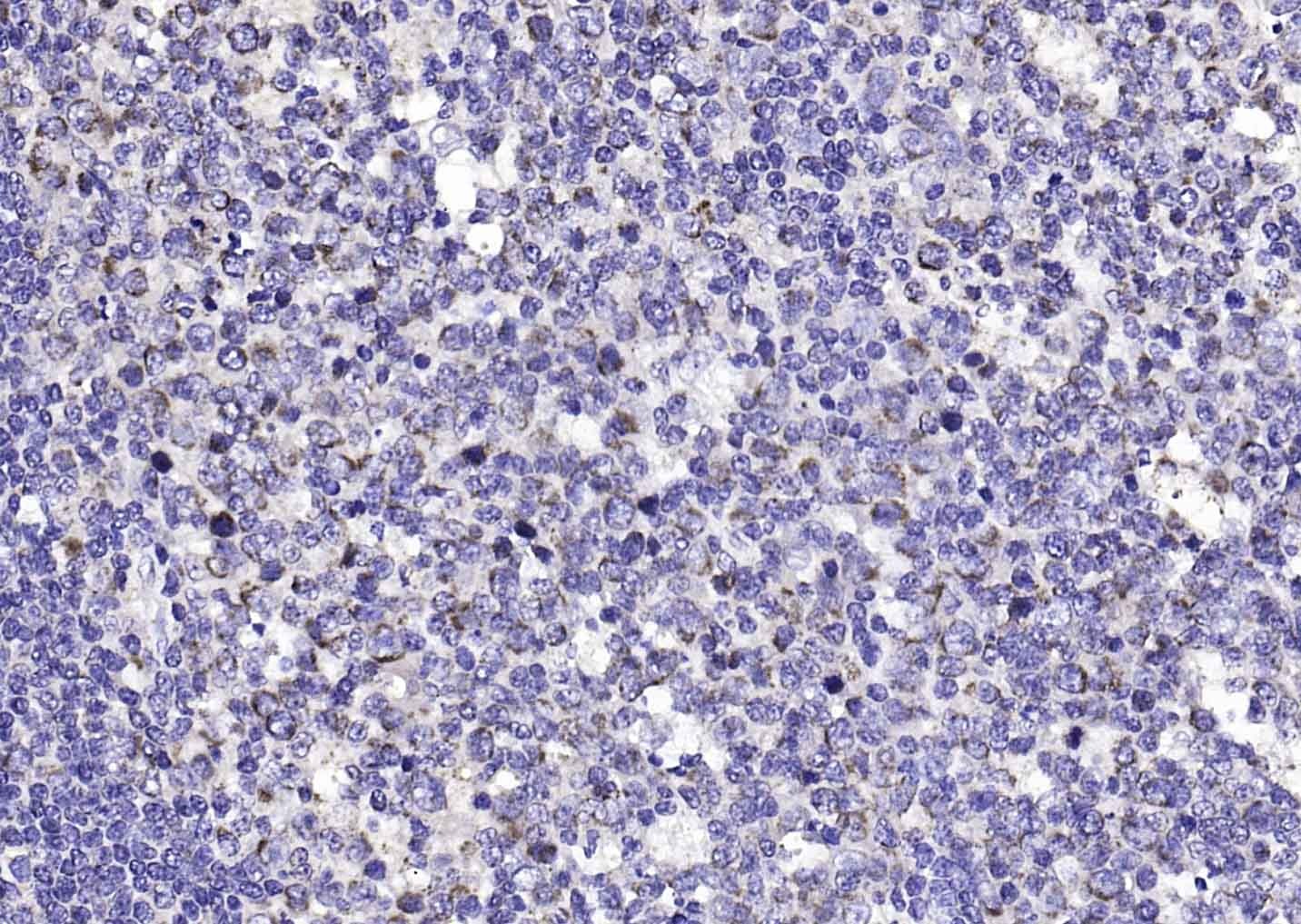 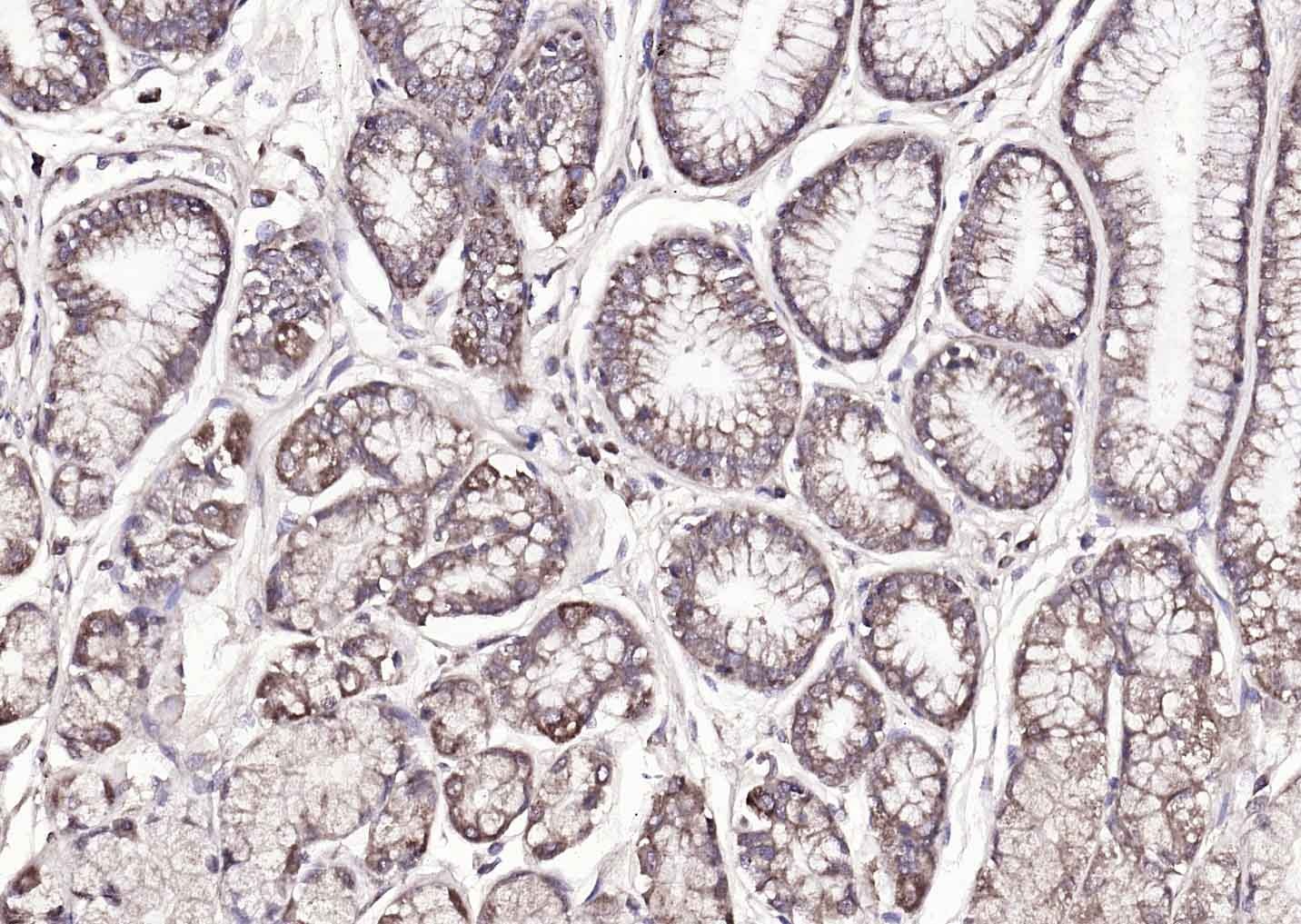 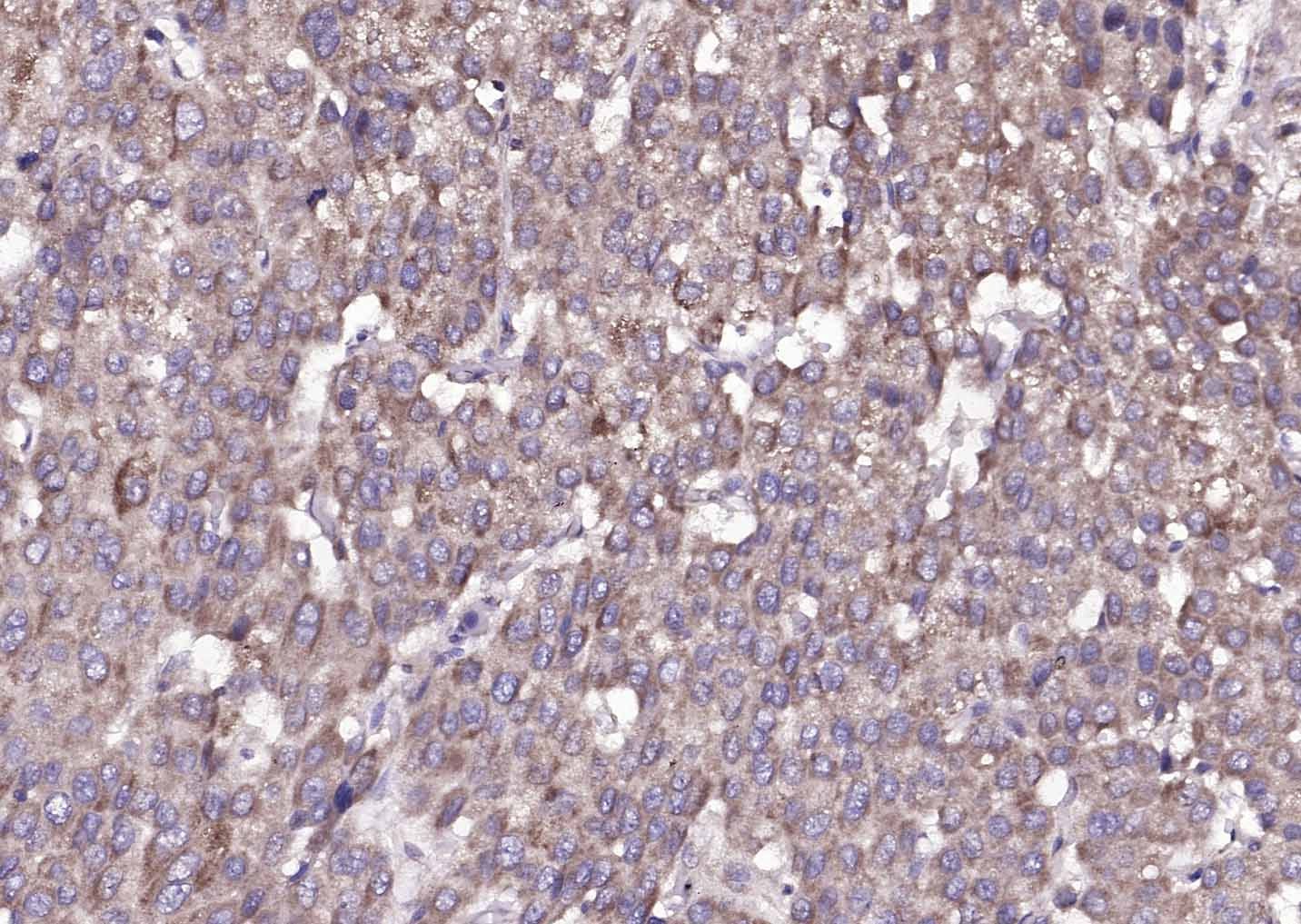  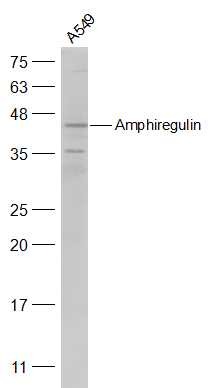 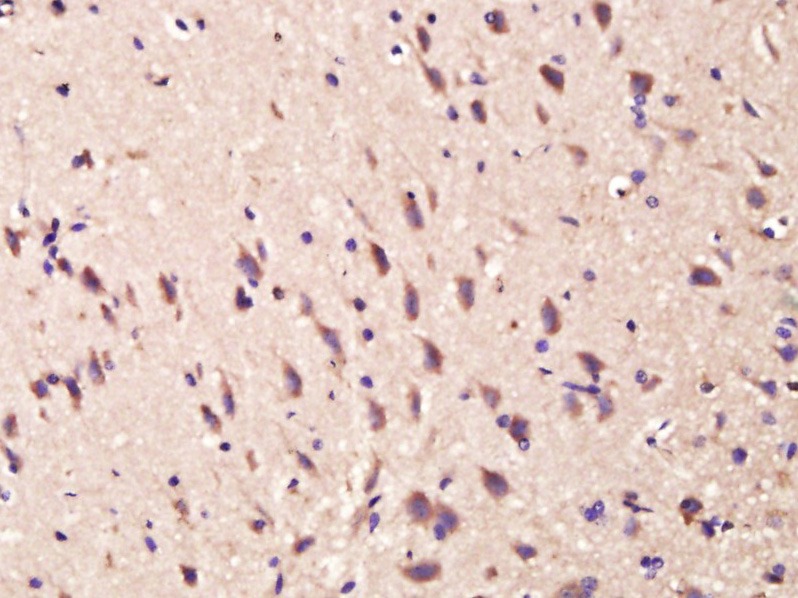  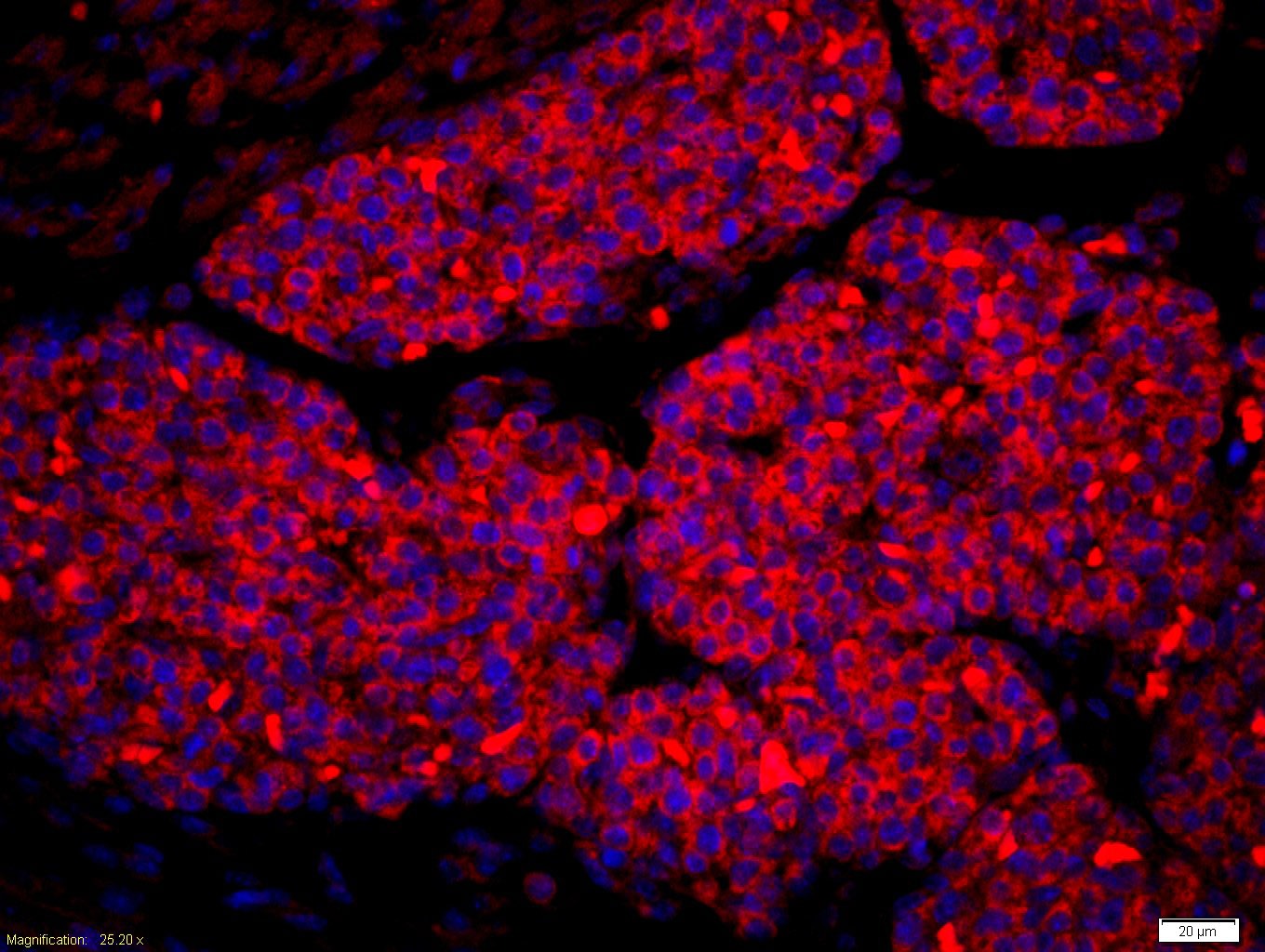 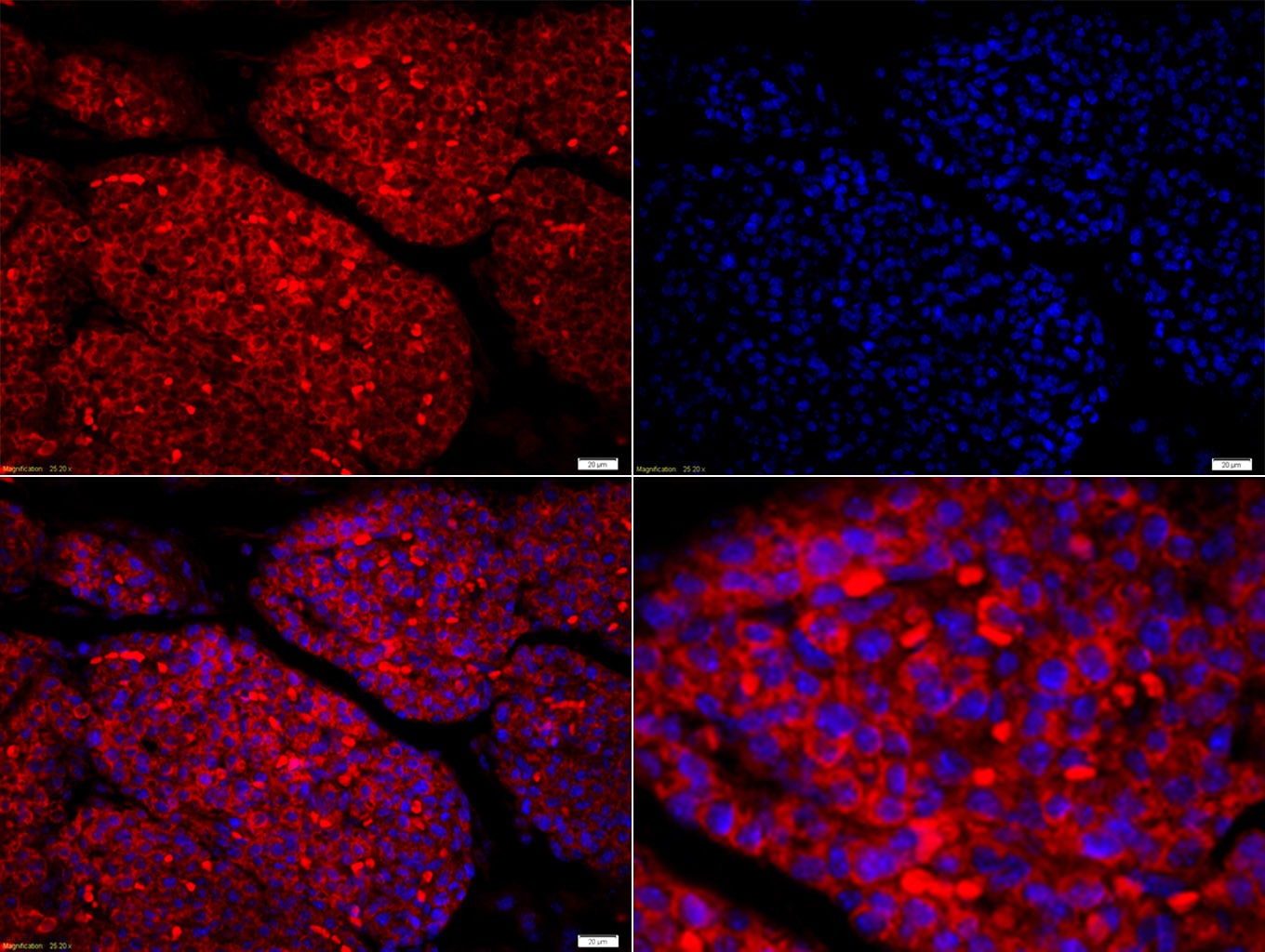 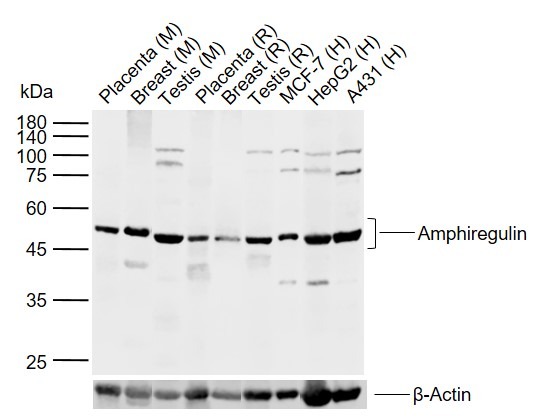 |
| Application | |
| Recommended Dose | WB: 1:500-2000; IHC-P: 1:100-500; IHC-Fr: 1:100-500; IF: 1:100-500 |
| Antibody Type | Polyclonal |
| Host Species | Rabbit |
| Subcellular Localization | Membrane; Single-pass membrane protein. |
| Construction | Polyclonal Antibody |
| Purification | Protein A purified |
| Appearance | Liquid |
| Formulation | 0.01M TBS (pH7.4) with 1% BSA, 0.02% Proclin300 and 50% Glycerol. |
| Concentration | 1 mg/mL |
| Research Background | Amphiregulin expression is induced by phorbol ester, estrogen, androgen, and other EGFR ligands. In vitro, amphiregulin functions as an autocrine growth stimulator to drive proliferation of colon carcinoma cells, normal and oncogene-transformed mammary epithelial cells, cervical carcinoma cells, prostate cancer cells, and keratinocytes. Amphiregulin is important in the development of human placenta and murine mammary gland. It is reportedly overexpressed in human cancers of breast, colon, stomach and pancreas. |
| Immunogen | KLH conjugated synthetic peptide: human Amphiregulin |
| Antigen Species | Human |
| Gene Name | AREG |
| Gene ID | |
| Protein Name | Amphiregulin |
| Uniprot ID | |
| Biology Area | EGF,EGF |
| Function | Ligand of the EGF receptor/EGFR. Autocrine growth factor as well as a mitogen for a broad range of target cells including astrocytes, Schwann cells and fibroblasts. |
| Molecular Weight | Theoretical: 16 kDa. |
| Color | Transparent |
| Appearance | Liquid |
| Stability & Storage | Store at -20°C or -80°C for 12 months. Avoid repeated freeze-thaw cycles. |
| Transport | Shipping with blue ice. |
| Size | Quantity | Unit Price | Amount | Operation |
|---|

Copyright © 2015-2026 TargetMol Chemicals Inc. All Rights Reserved.